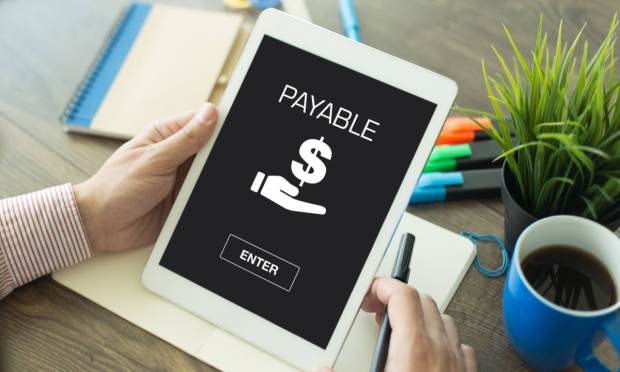Average Business Spends 2% of Sales on Payment Operations

Companies in various sectors face payment struggles ranging from inefficient processes that result in ballooning costs to old-school payment methods that fail to offer adequate visibility into payment status.
For example, payment professionals at education, technology and travel organizations that generate more than $100 million annually and derive some of their incomes from cross-border sales report that their companies’ payment operations can carry painful costs.
They said their businesses spend an average of 2% of their annual sales on payment operations and 0.8% on payment processing, according to the Digitizing B2B Payments Tracker, a PYMNTS and Deluxe collaboration.
Get the report: Digitizing B2B Payments Tracker
Businesses also reported dealing with frictions that were not directly related to cost. For example, respondents reported experiencing problems stemming from long wait times for payments. Companies also found it frustrating when they could not easily track payments, with vendors stating that they required more knowledge as they awaited compensation, and buyers explaining that they fielded too many calls from vendors asking about payment statuses.
Pleasing Customers and Cutting Costs
Modernizing accounts receivable (AR) and accounts payable (AP) might reduce some of these frictions. Using one industry as an example, insurance companies can move away from check-based payouts and modernize their processes to better please policyholders and reduce AP costs.
Read more: Can’t Live With ’Em, Can’t Live Without ’Em
Indeed, across all industries, more and more businesses and consumers are turning to quicker digital alternatives to pay the bills.
Such decisions must not be taken lightly, however, as paper checks have been a mainstay in the field, and many insurers’ existing workflows are designed with the payment method in mind. Moving away from physical checks could require identifying alternative payment methods that are easy for business clients to accept and offer similarly rich payment data.
Despite these hurdles, reducing or eliminating physical checks could confer notable benefits for insurers, such as helping them avoid expenses related to purchasing envelopes and mailing them out. Digital payment methods may also be easier for insurers to use and business customers to receive at a time when fewer employees are visiting their offices to print checks or collect mail.
Meeting the Demand for Faster Claim Payouts
This could see firms adopt eChecks or other detail-rich digital payment methods instead. With digital tools like these, insurers can disburse funds in more efficient, budget-friendly ways. That’s important because insurance companies want to deliver swift, convenient claim payouts that are both cost-effective to issue and conducive to customer retention.
Demand for faster claim payouts is heating up among individual insurance customers, and this trend could sweep into the business sector as executives begin to expect similar conveniences in their professional lives. This could suggest untapped demand for instant insurance disbursements, enabling the carriers that can meet these new needs to stand out among the competition.
To accommodate these new expectations, some insurance carriers have been rethinking their strategies. Firms that adopt digital payment methods may find that doing so creates smoother experiences for clients, makes them less dependent on paper checks and reduces their own internal expenses.
